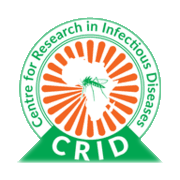Masters Research
Our Masters students are currently researching on interesting topics in diverse sceneries…
1. Assessment Of Immune Responses And Protective Capacity Of OV-DKR-2 Using Mice Models For The Development Of Vaccine Against Human Onchocerciasis
Student: TEKE EFETI MARY
Rationale: Attempts to eliminate onchocerciasis have been primarily through mass drug administration of Ivermectin and by vector control which possess numerous, formidable and logistical obstacles. To overcome these obstacles and complement the present control measures, additional tools like development of vaccine against O. volvulus is critically needed. Standing on the basis that protective immunity within the O. volvulus endemic population has been described in putative immune individuals, Concomitant immune individuals and has equally been demonstrated in cattle, mice and from immune-epidemiological studies, gives the possibility of developing a potential vaccine candidate against onchocerciasis. Previously, Shey et al 2020, developed a novel onchocerciasis vaccine candidate, Ov-DKR-2 using computational means, the results of the study indicated that, the vaccine outperforms other frontline vaccine candidates (Ov-103 and Ov-RAL-2). This study therefore is aimed at assessing the efficacy of Ov-DKR-2 as a potential vaccine candidate in Onchocerca infected mice models. Results obtained will complement in vitro data to inform about the potential of the antigen as a vaccine against human and cattle onchocerciasis against O. volvulus as a large scale prevention of human onchocerciasis in hyper-endemic area.
2. Virtual Screening Identification and Ex Vivo Validation Of Potential Antimalarial Inhibitors From African Medicinal Plants
Student: ARREYETTA BAWAK AUGUSTINE BESONG
Rationale: Malaria is an endemic disease in most tropical countries (Africa, Asia, and Latin America), with about half of the world’s population at risk of infection according to the World Health Organization. Presently, there has been the development of resistance by Plasmodium protozoans against most of the drugs currently used to treat malaria (e.g. chloroquine, artemisinin and its derivatives). Furthermore, there are growing concerns of inefficacy of chemoprophylaxis, which has often resulted in poor results. Therefore, the quest for new efficacious and safe antimalarial molecules is highly imperative. This would enable curing the disease, breakage of transmission cycles and reducing it burden and morbidity. Some plant compounds derived from African medicinal plant have demonstrated significant anti-malarial/antiplasmodial properties with activities ranging from “very active” to “weakly active”. Considering this potential of broad-spectrum activity, these compounds will be evaluated against malaria parasite (P. falciparum).
3. Immune Responses to single and co-infections of schistosomiasis and malaria children in the Mabga Sub Division in the West Region of Cameroon
Student: KOBI DESMOND TANGWA
Rationale: In Cameroon, schistosomiasis and malaria association are recognized as major public health problems. All the factors that favour transmission of schistosomiasis and malaria are present in Mata-Barrage, Barrage, Mabonko-Bor, and Mabongko village, a rural community in Magba subdivision in the West region of Cameroon.
This accounts for the geographical overlap in the distribution of these parasites hence co-infection. Children of ages 6 years to 16 years are particularly susceptible to the adverse effects of these two infections. Although studies on schistosomiasis and malaria association have been carried out in some parts of Cameroon, the findings of these studies are conflicting. The study is aimed at testing the hypothesis that active schistosomiasis infections alter the cellular immune response to Plasmodium.
4. Evaluation Of The Potential Of A Chimeric Antigen, Ov DKR 2 As A Diagnostic Biomarker For Human Onchocerca Volvulus
Student: EYONG ETAKA JUDITH CHRISTINE
Rationale: The disease onchocerciasis has some devastating effects and with the help of some control programs about some 19million DALYs have been averted. The focus of these programs for a long time has been the elimination of this disease in the remaining endemic areas. These will require proper diagnostic tools to evaluate, identify and monitor areas which need to be treated with ivermectin and where treatment should be stopped. But most of these diagnostic tools are more adapted in hyper endemic and mesoendemic areas where prevalence of the disease is higher and will produce false negative results in hypoendemic areas. The Ov 16 test which is being used currently does not distinguish between past and current infection. Furthermore, it has been reported that some 20% of people do not produce antibodies against this antigen, therefore resulting in some false negative individuals who may serve as reservoirs. The aim of this work is to assess the potentiality of OvDKR 2 being used as a diagnostic tool for onchocerciasis to complement the Ov 16 test in onchocerciasis elimination programs.
5. Comparative Analysis Of Light Microscopy And Rapid Diagnostic Tests In The Diagnosis Of Malaria In People Living With HIV In Fako Division, South West Region Of Cameroon
Student: GEORGIA FRU MBAH-MBOLE
Rationale: Malaria is diagnosed by microscopy, Rapid diagnostic tests and Polymerase chain reaction. The accuracy of the diagnosis could be influenced either by the HIV treatment regimen or its co-infection with malaria, which is quite common in sub-Saharan Africa and Cameroon. HIV therapy with co-trimoxazole may bring down malaria parasite load below detection limit by microscopy thereby giving a false negative result. With RDTs, circulating antigens persist after parasite clearance further leading to non-specific reactions and thus false positives. PCR is a very sensitive technique, but it is expensive and complicated due to the equipment required, reagent maintenance and qualified personnel required. No study has been conducted to assess the accuracy of microscopy and rapid diagnostic tests in the detection of malaria parasites in people living with HIV/AIDS in Cameroon. This work will therefore focus on comparing microscopy and Rapid diagnostic tests using Polymerase chain reaction as a gold standard in co-infected people. Furthermore, this study will shed light on the accuracy of light microscopy and RDTs in the detection of malaria parasites in the target population and recommendations will be made, which may improve the management of malaria in people living with HIV in Fako division and Cameroon at large.
6. Identification Of Alleles In Anopheles Gambiae S.I Involved In Pyrethroid (Permethrin, Deltermethrin) And Carbamate Resistance In The Buea Municipality, South West Region Of Cameroon
Student: TEKOH TERRISS MBACHICK
Rationale: Malaria is one of the major global public health challenges which has equally shown to be a burden in the sub-Saharan Africa region, in 2019, an estimation of 229 million cases of malaria occurred worldwide in which most malaria cases were in the African Region (215 million or 94%), and from this an estimation of 409 000 deaths were global, 67% of deaths were Children aged under 5 years. For a control of this the government of Cameroon has implemented various strategies which is threatened greatly by developed resistance in mosquito vector species which transmits plasmodium. The principal vector for this resistance in Cameroon is the Anopheles gambiae specie it is of importance to detect the various genes involved in resistance to chemical insecticides these genes include the kdr gene, cytochrome P450 genes, and the ACE-1 genes in which mutations at the level of substitution of an amino acid for another; the kdr gene either 1014L to 1014S or 1014F; L119F in the cytochrome P450 genes; G119S in the ACE-1 gene. This study aims at detecting alleles in An.gambiae involved in resistance towards Pyrethroid (permethrin, Deltermethrin) and Carbamate in the Buea municipality.
7. Detection, Identification and Semi-Quantification of Genetically Modified Events in Commercial Food Products in Cameroon Through the Application of Multiplex PCR Based Assay
Student: ACHA NELSON LEKEAYI
Rationale: There are biosafety concerns that GM crops may have unintended and hazardous impact on living organisms well-being. As such several countries have adopted labelling policies for GM products to better inform consumers; creating a chance for all to choose whether or not to consume these products, given the numerous societal advantages presented by GM. However, these policies have not been strictly implemented by most exporting countries resulting in poor or miss labelling. This leaves importing countries like Cameroon with the need of a quick, reliable and cheap verification procedure to enforce compliance with regulation policies. This research is designed therefore to establish a verification procedure through the detection, identification and semi-quantification of GM events in selected imported commercial food products in Cameroon.
8. Assessment of Immune Response to Ov-DKR-2 Antigen Against Onchocerciasis via Antibody-dependent Cellular Cytotoxicity (ADCC) Assay
Student: GEMUH BLENDIN SERRI
Rationale: More than 99% of Onchocerciasis infections are in Africa, and Cameroon has an infection rate of 2.81 million and 5.2 million people at risk. The prevalence of Onchocerciasis is due to poor drainage, rivers, and streams, poor housing, lack of proper sanitation. Individuals having signs and symptoms are immediately diagnose and treated for Onchocerciasis but this treatment kills just the microfilaria worm and it cannot be given to children below 5 years, pregnant women, and those with co-infection like Loa Loa. Putative immune individuals show no clinical manifestation of the infection, this leads to the need for accurate and proper treatment. This, place a need for the development of Vaccine candidate using multiepitope antigen which is more potent.
9. Evaluation of Immune responses to a recombinant multi-epitope antigen in mice models.
Student: MOMNOUGUI SONIA MAÏTE ELISABETH
Rationale: The neglected tropical disease Onchocerciasis affects about 20.9million people worldwide, leading to disability-adjusted life years (DALYs) due to permanent blindness and neurological damage. Throughout the years, it has been noticed that some individuals living in areas of hyperendemicity for onchocerciasis show no symptoms and are therefore known as putative immune. This strongly suggests that the human system is able to mount an immune response effective enough to completely eradicate the parasite. Multi-epitope vaccines have shown efficiency against Brugia malayi, a filarial worm homologue in gerbils and single-epitope vaccines against Onchocerca ochengi in calves. As such, it was postulated that combination of protective antigens may amplify potency of a vaccine. OvMANE1, a recombinant multi-epitope diagnostic and vaccine antigen consisting of immunodominant peptides of O. volvulus will be studied, to evaluate its potential as a vaccine candidate against O. volvulus in a mice model. The successful development of a vaccine is a vital route to be exploited for the elimination of onchocerciasis.
People We Collaborate With
We collaborate with these institutions/labs and their personnel to advance Research and Development on Molecular and Cell Biology.


